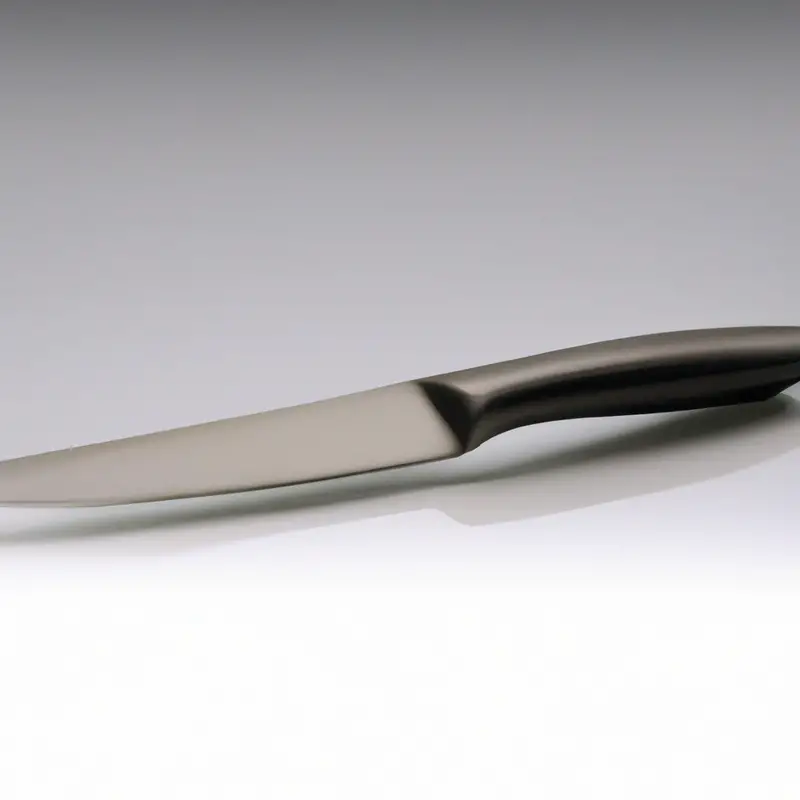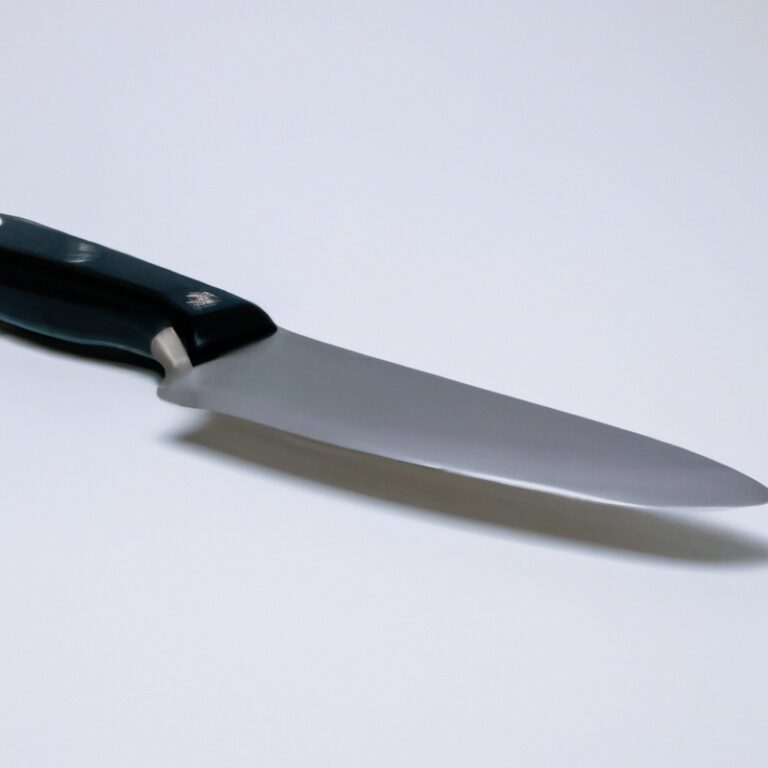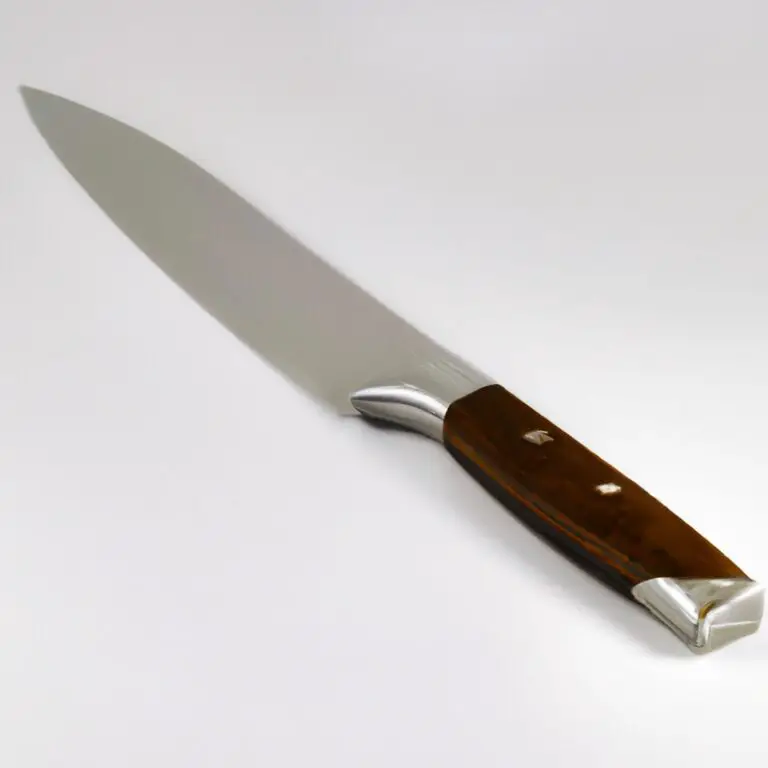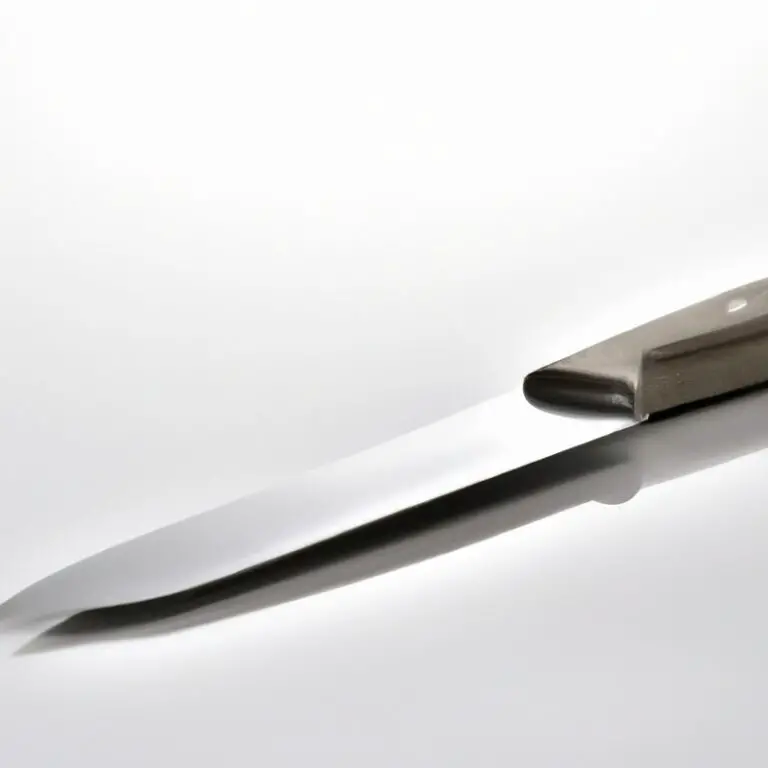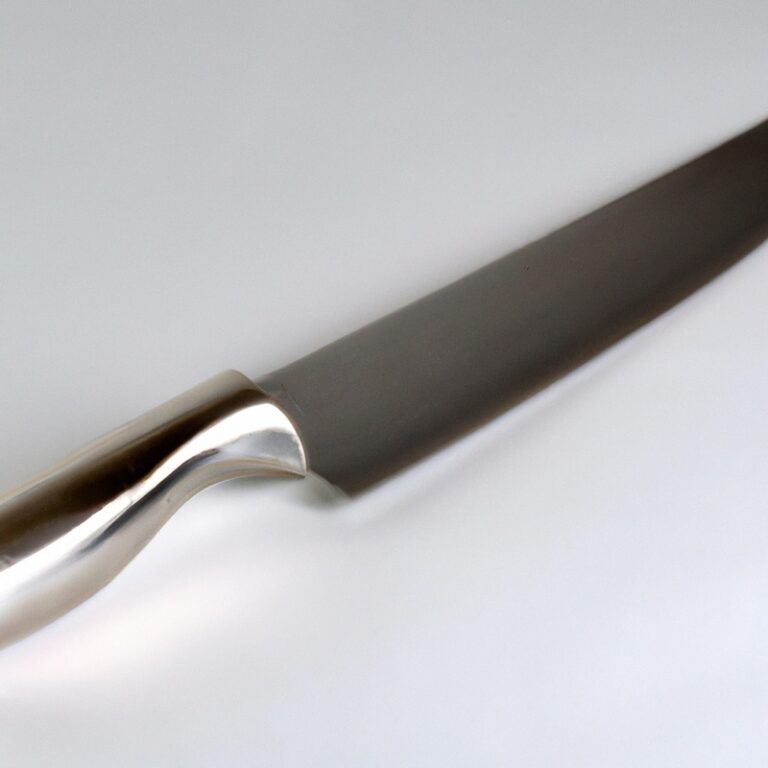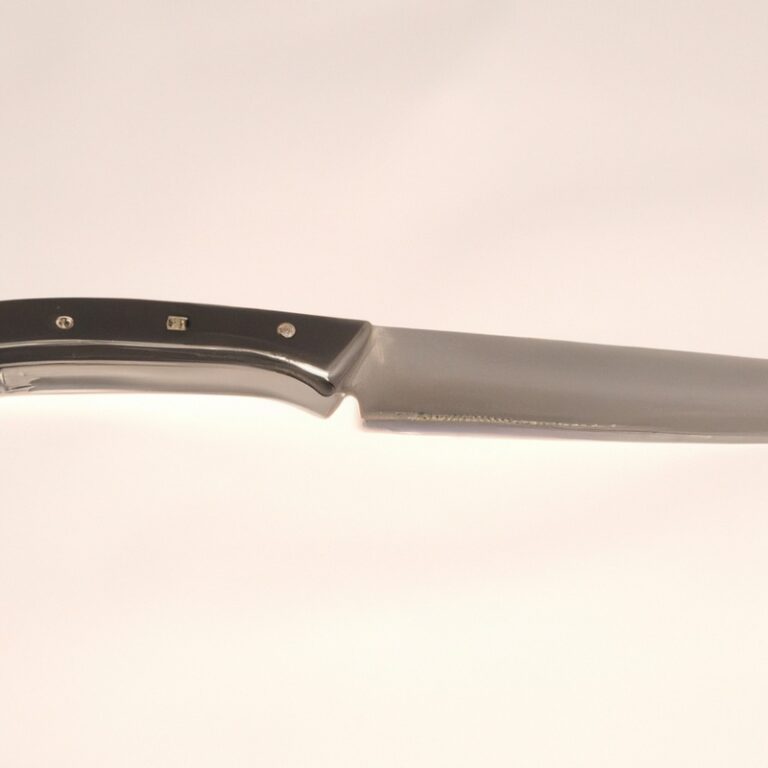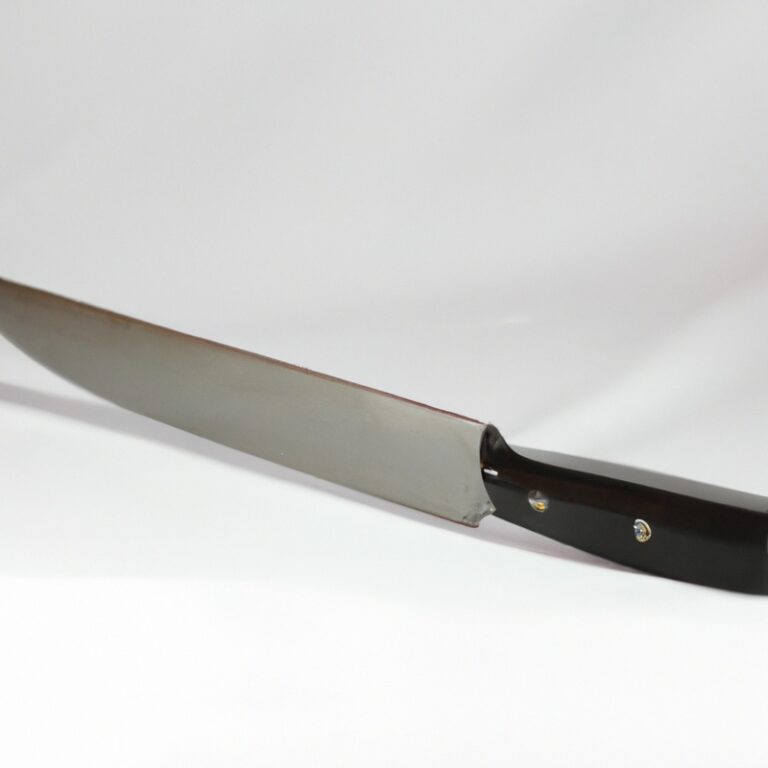How Does Knife Steel Affect Blade Stain Resistance?
Key Takeaways:
- Higher carbon content in knife steel enhances stain resistance.
- Chromium in knife steel improves stain resistance.
- Blade stain resistance is also influenced by the polishing and finishing process.
- Proper care and maintenance are crucial to preserving blade stain resistance.
Are you tired of seeing stubborn stains on your knives after just a few uses?
Well, the secret lies in the type of steel used in the blade.
Yes, the choice of knife steel plays a crucial role in determining its stain resistance.
But what exactly is knife steel, and why is it so important for blade performance?
In this article, I’ll demystify the world of knife steel and explain how it affects stain resistance.
We’ll explore different types of steel, their stain resistance capabilities, and the impact of steel composition and heat treatment.
Plus, I’ll share tips on how to maintain blade stain resistance and choose the right knife steel for your needs.
Stick with me, and say goodbye to those pesky stains!
| Knife Steel | Stain Resistance |
|---|---|
| Stainless Steel (e.g. 440C) | High |
| High Carbon Steel (e.g. 1095) | Low |
| Tool Steel (e.g. D2) | Medium |
| Powder Metallurgy Steel (e.g. S35VN) | High |
| Ceramic | High |
Understanding Knife Steel
What is knife steel?
Knife steel refers to the material used to make the blade of a knife. It determines the durability, sharpness, and overall performance of the knife.
Knife steel can be made from different alloys, such as stainless steel, high carbon steel, or Damascus steel.
Each type of steel has its own unique characteristics and properties. The composition and heat treatment of the steel heavily influence its performance, including its stain resistance capabilities.
Choosing the right knife steel is important for ensuring a quality blade that meets your needs.
The importance of knife steel in blade performance
The importance of knife steel cannot be overstated when it comes to blade performance. Knife steel determines the blade’s hardness, strength, and ability to hold an edge.
It also impacts the blade’s overall durability and resistance to wear and corrosion.
Different types of steel have varying properties, making some more suitable for specific tasks than others. Whether you’re using a knife for slicing, chopping, or delicate tasks, choosing the right knife steel is essential for achieving optimal performance and longevity.
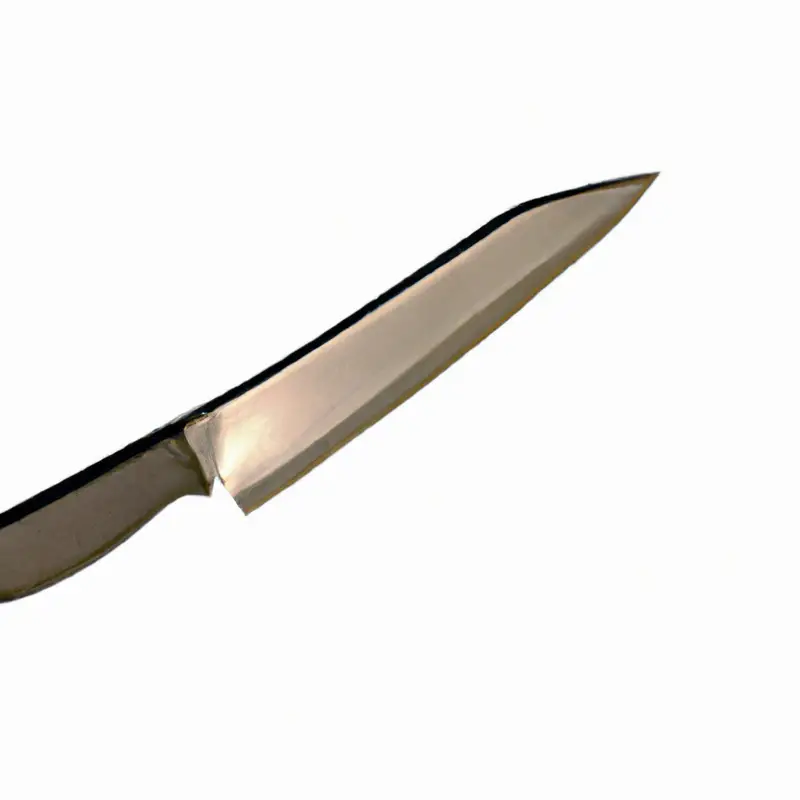
Blade Stain Resistance
What is blade stain resistance?
Blade stain resistance refers to the ability of a knife’s blade to resist staining or discoloration. It is important because stains can not only affect the appearance of the blade but also indicate potential corrosion or damage.
Factors such as the type of steel, composition, and heat treatment can influence the stain resistance of a blade.
Proper cleaning, drying, and maintenance techniques are essential for preserving stain resistance. Choosing the right knife steel depends on personal needs and preferences, considering the trade-offs between stain resistance and other blade characteristics.
Factors affecting blade stain resistance
There are several factors that can affect the stain resistance of a knife blade.
One important factor is the type of steel used to make the blade.
Certain types of steel, such as stainless steel, are naturally more resistant to staining than others.
Steel composition also plays a role, with higher levels of chromium and other alloys enhancing stain resistance.
Additionally, the heat treatment process can impact stain resistance, as proper heat treatment ensures a durable and stain-resistant blade.
It’s important to note that while certain factors can enhance stain resistance, no blade is completely immune to staining.
Proper cleaning, drying, and maintenance are still necessary to preserve the stain resistance of a knife blade.
How Knife Steel Affects Blade Stain Resistance
Different types of steel and their stain resistance capabilities
Different types of steel have varying degrees of stain resistance capabilities.
- Stainless Steel: Stainless steel is known for its excellent stain resistance. It contains a high percentage of chromium, which forms a protective oxide layer on the surface, preventing staining.
- High Carbon Steel: High carbon steel is more prone to staining compared to stainless steel. It requires regular maintenance to prevent stains from forming.
- Damascus Steel: Damascus steel, known for its beautiful patterns, has moderate stain resistance. Its stain resistance can vary depending on the specific composition and heat treatment.
Influence of steel composition on stain resistance
The composition of knife steel plays a significant role in determining its stain resistance. Some elements, such as chromium, increase stain resistance by forming a protective layer on the surface of the steel, preventing oxidation and corrosion.
Stainless steels, which contain a higher percentage of chromium, tend to have excellent stain resistance.
On the other hand, steels with a higher carbon content, like high carbon steels, are more prone to staining due to their lower chromium content. The specific combination of elements in the steel composition directly affects how resistant it is to stains.
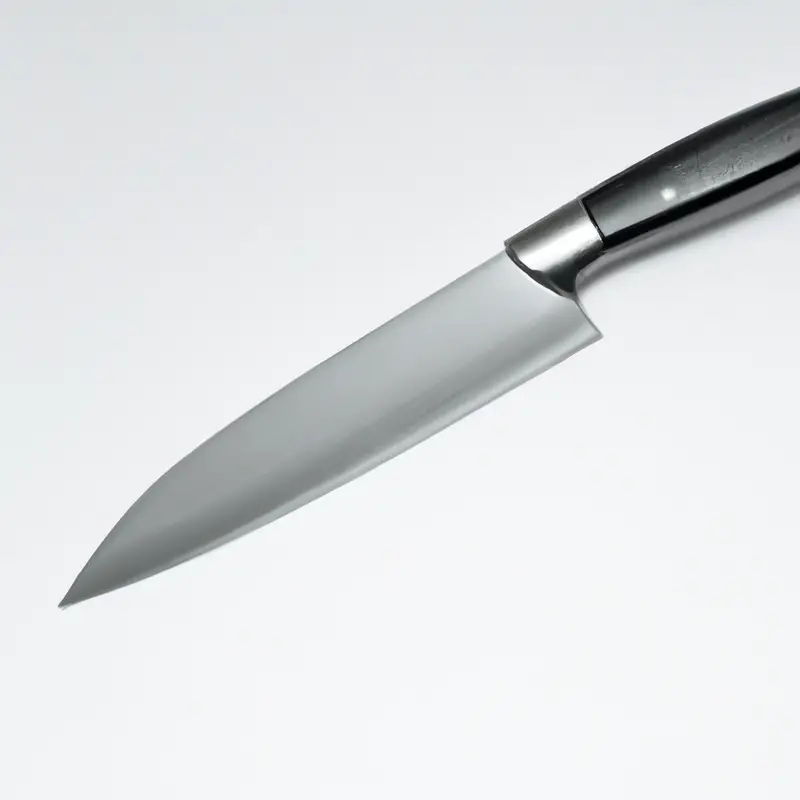
Heat treatment and its impact on blade stain resistance
Heat treatment plays a significant role in determining a blade’s stain resistance. By subjecting the steel to specific heating and cooling processes, the material’s structure can be modified to enhance its stain resistance properties.
This is achieved by balancing the steel’s hardness and toughness, which helps to prevent corrosion and staining.
Heat treatment also affects the steel’s ability to retain a sharp edge, making it an essential factor for both practical and aesthetic reasons. Proper heat treatment can greatly improve a blade’s stain resistance and overall performance.
Popular Knife Steels and Stain Resistance
Stainless steel and its stain resistance properties
Stainless steel is highly valued in the knife-making world for its excellent stain resistance properties.
It contains a high amount of chromium, which forms a protective layer on the surface of the blade, shielding it against rust and corrosion.
This means that even when exposed to moisture or acidic substances, stainless steel blades are less likely to develop stains or discoloration.
Stainless steel is a popular choice for outdoor and kitchen knives due to its low maintenance and long-lasting performance.
Whether you’re a seasoned chef or an outdoor enthusiast, stainless steel knives are a reliable option for their stain resistance.
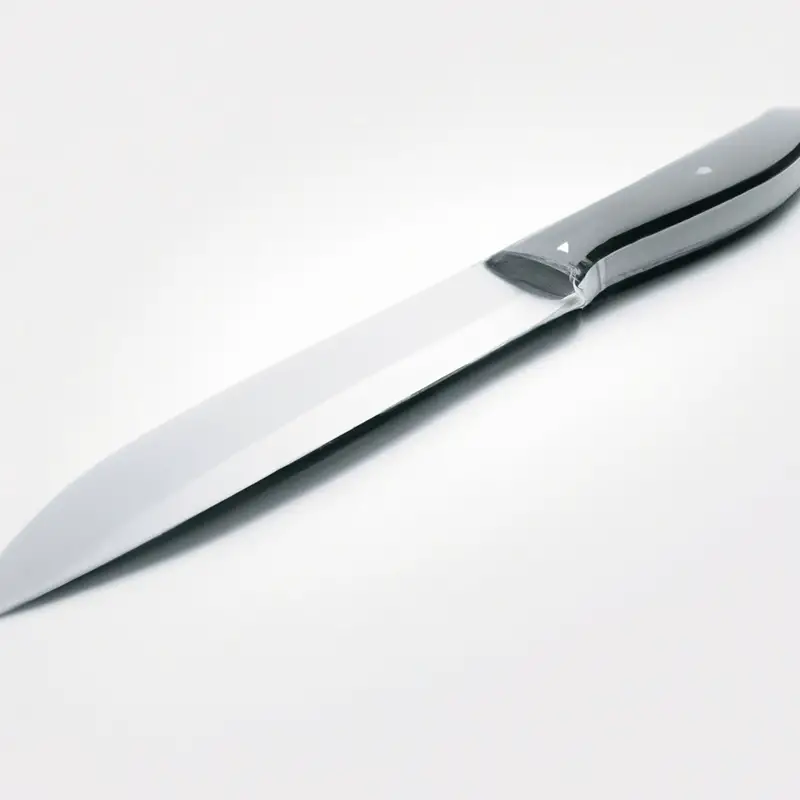
High carbon steel and its vulnerability to stains
High carbon steel, while known for its exceptional strength and edge retention, is vulnerable to stains. This is due to its higher carbon content, which makes it more prone to oxidation and corrosion.
When exposed to moisture or acidic substances, high carbon steel blades can develop stains or discoloration.
To prevent this, it’s essential to regularly clean and dry the knife after use, avoiding prolonged exposure to moisture. Applying a protective coating or finish can also help minimize the risk of staining.
While high carbon steel offers superb performance, it requires extra care to maintain its appearance.
Damascus steel and its stain resistance
Damascus steel is known for its excellent stain resistance. This is due to its unique composition and manufacturing process.
The layers of different types of steel in Damascus steel create a beautiful pattern, but they also contribute to its stain resistance.
The high carbon content and precise heat treatment result in a blade that is less prone to corrosion and staining. Additionally, the natural wear and tear of Damascus steel can also provide a protective layer, further enhancing its stain resistance.
If stain resistance is a priority for you, Damascus steel is a great choice for your knife blade.
Maintaining Blade Stain Resistance
Proper cleaning and drying techniques
Proper cleaning and drying techniques are essential for maintaining the stain resistance of your knife blade. Here are some tips:
- Clean your knife after each use. Use mild dish soap and warm water to wash away any food residue or oils. Avoid harsh chemicals that can damage the blade.
- Use a soft sponge or cloth to gently scrub the blade. Avoid abrasive materials that can scratch the surface.
- Dry your knife thoroughly after cleaning. Moisture can lead to rust and staining. Use a clean towel to wipe the blade, paying special attention to the handle and any crevices.
- Store your knife in a dry place. Avoid leaving it in a damp environment, such as a sink or cutting board, where moisture can accumulate.
Using protective coatings or finishes
Protective coatings or finishes are an effective way to enhance the stain resistance of knife blades.
These coatings form a barrier between the steel and potential staining agents, such as moisture and acids.
Popular options include PVD (Physical Vapor Deposition) coatings like DLC (Diamond-Like Carbon) and ceramic coatings.
They not only provide excellent stain resistance but also offer additional benefits like increased hardness and scratch resistance.
Application techniques vary but typically involve a process of vacuum deposition or spraying.
Coatings can wear off over time, so it’s important to follow manufacturer guidelines for reapplication or maintenance.
Consider using protective coatings or finishes to keep your blade resistant to stains.
Regular sharpening to prevent staining
Regular sharpening of your knife blades is an effective way to prevent staining. When a blade becomes dull, it loses its ability to cut cleanly, which can lead to more contact with food and other materials.
This increased contact can cause staining to occur.
By maintaining a sharp edge on your knives, you reduce the risk of staining because the blade is able to cut through materials effectively without leaving behind residue or oxidation. It is recommended to sharpen your knives regularly, depending on usage, to ensure they remain sharp and stain-resistant.
Choosing the Right Knife Steel for Stain Resistance
Identifying personal needs and preferences
Identifying personal needs and preferences is key when it comes to choosing the right knife steel for stain resistance.
Consider factors such as your cooking style, frequency of use, and maintenance abilities.
Do you prefer a low-maintenance option or don’t mind putting in extra effort?
Is stain resistance your top priority or are you willing to compromise for other blade characteristics?
Understanding your specific needs will help you make the optimal choice and find a knife that suits your preferences.
Understanding trade-offs between stain resistance and other blade characteristics
When considering blade characteristics, stain resistance is just one factor to consider. There are trade-offs to be aware of.
Some steels may offer excellent stain resistance, but they can be harder to sharpen and may not hold an edge as well.
On the other hand, certain steels with high stain resistance may also be more prone to chipping or breaking. It’s important to prioritize what matters to you in a knife and find the right balance between stain resistance and other desirable blade characteristics.
Final Verdict
Understanding the relationship between knife steel and blade stain resistance is crucial for selecting the right tool for your needs.
Different types of steel have varying levels of stain resistance, and factors such as composition and heat treatment play a role as well.
Stainless steel offers excellent stain resistance, while high carbon steel is more vulnerable.
Proper maintenance, including cleaning, drying, and regular sharpening, can help preserve stain resistance.
Ultimately, choosing the right knife steel requires considering personal preferences and trade-offs between stain resistance and other blade characteristics.
By making an informed decision, you can ensure a durable and stain-resistant blade that meets your needs.
Trust in this information and make well-informed choices when it comes to your knife steel selection.

